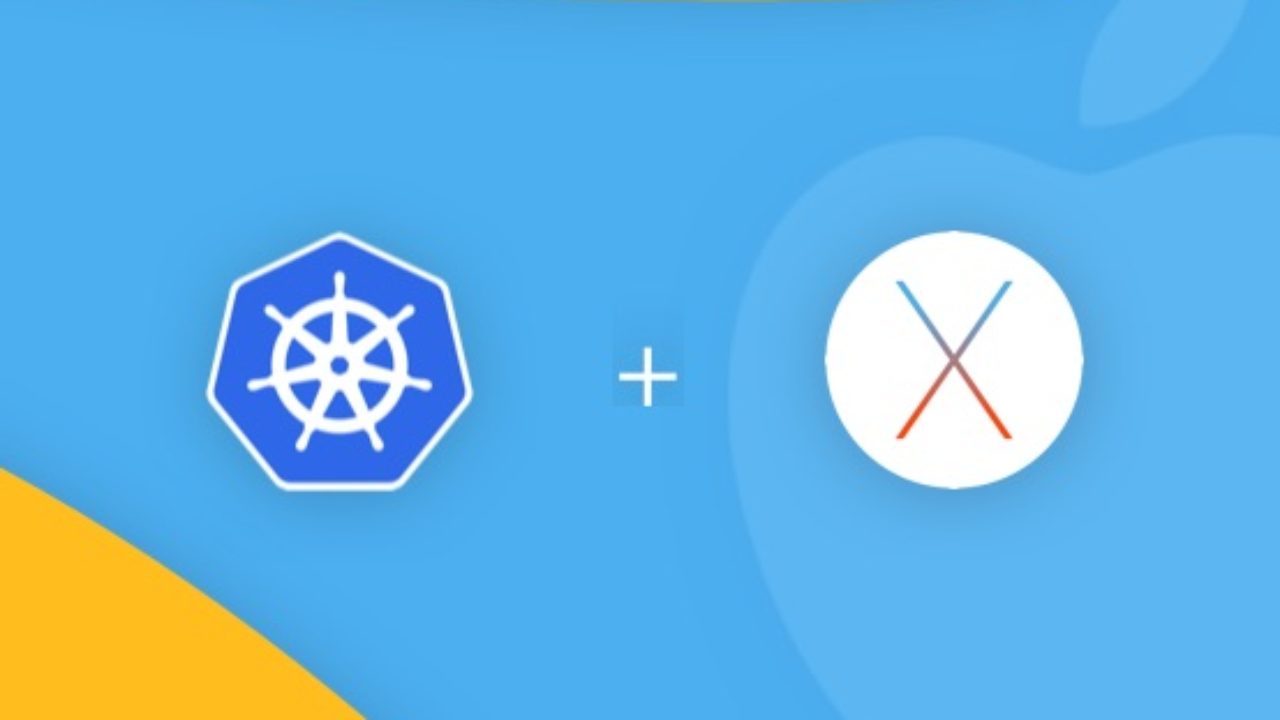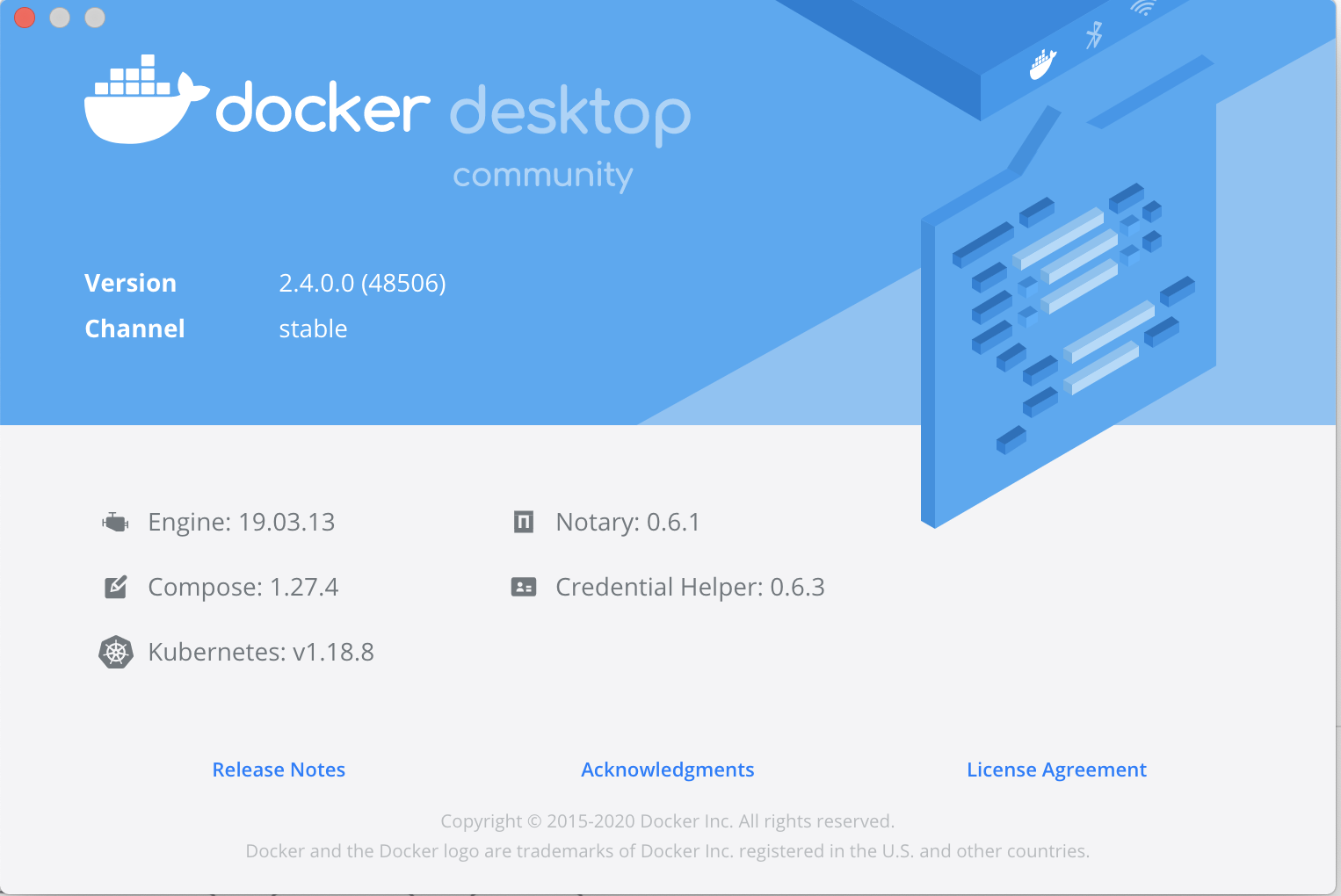

- KUBERNETES FOR MAC CODE
- KUBERNETES FOR MAC DOWNLOAD
Run these commands to download the pause image and push it to the correct ECR repository. If the cluster is unable to download the pause image, this usually manifests as kubeadm timing out waiting for kubelet to boot the control plane. Nothing I could configure would stop this. When we run kubeadm, it will verify and use a pause image hosted under the same container image registry as is hosting the other images. We will be building the images for kube-apiserver, kube-controller-manager, kube-proxy & kube-scheduler shortly but the pause image must be manually pushed up. Set up your local Docker machine so that it has 50GB of disk space and 10GB of memory.Ĭreate the ECR repositories that will be used to store the Docker images that you will build the Terraform for this is contained in the repositories directory of the repository. At least 50GB of disk space, primarily for running the tests just before submitting your PR.
KUBERNETES FOR MAC CODE
A text editor or IDE to allow you to make changes to the code.Docker installed which is used heavily to build and test Kubernetes.The Terraform code used to manage the infrastructure changes for this testing is available at. Destroy the cluster – while you could probably restart the pods associated with the cluster infrastructure, it was simpler to destroy everything and bring it back anew.
 Turn the individual instances into a Kubernetes cluster, using a tool such as kubeadm that is built as part of Kubernetes. Start up some instances within AWS to be used as a Kubernetes cluster. Push the container images somewhere that an instance running in AWS can pull from, such as ECR repositories. Build the Kubernetes binaries & container images which contain your changes. The basic flow for developing the AWS cloud provider is as follows: The AWS cloud provider code is going to be moved to cloud-provider-aws. At the moment the code for the integration with AWS lives at staging/src/k8s.io/legacy-cloud-providers/aws within the Kubernetes repository. Unfortunately, the process isn’t trivial as the kubelet currently relies on being able to ask the cloud providers for various pieces of information at startup such as which availability zone it is running in. This will allow each cloud provider to be released on a different cadence to Kubernetes itself. The Kubernetes community is currently in the process of moving cloud vendor specific code into their own cloud provider repositories. OverviewĪfter a lot of searching which turned up little information, this blog post serves as an answer to anyone else needing or wanting to achieve the same thing. I thus needed to build, package, deploy & test Kubernetes for AWS from the Kubernetes Git repository – this blog records the travails and steps of what is required to do this. As long as these simulated masters resided somewhere in AWS, I would be able to accurately test the AWS integration. Instead I needed to run the masters myself and essentially simulate EKS. This meant I wasn’t able to use EKS directly to test the changes as the EKS master nodes are not able to be controlled or upgraded by users. This lies entwined with the kube-controller-manager which runs on the masters.
Turn the individual instances into a Kubernetes cluster, using a tool such as kubeadm that is built as part of Kubernetes. Start up some instances within AWS to be used as a Kubernetes cluster. Push the container images somewhere that an instance running in AWS can pull from, such as ECR repositories. Build the Kubernetes binaries & container images which contain your changes. The basic flow for developing the AWS cloud provider is as follows: The AWS cloud provider code is going to be moved to cloud-provider-aws. At the moment the code for the integration with AWS lives at staging/src/k8s.io/legacy-cloud-providers/aws within the Kubernetes repository. Unfortunately, the process isn’t trivial as the kubelet currently relies on being able to ask the cloud providers for various pieces of information at startup such as which availability zone it is running in. This will allow each cloud provider to be released on a different cadence to Kubernetes itself. The Kubernetes community is currently in the process of moving cloud vendor specific code into their own cloud provider repositories. OverviewĪfter a lot of searching which turned up little information, this blog post serves as an answer to anyone else needing or wanting to achieve the same thing. I thus needed to build, package, deploy & test Kubernetes for AWS from the Kubernetes Git repository – this blog records the travails and steps of what is required to do this. As long as these simulated masters resided somewhere in AWS, I would be able to accurately test the AWS integration. Instead I needed to run the masters myself and essentially simulate EKS. This meant I wasn’t able to use EKS directly to test the changes as the EKS master nodes are not able to be controlled or upgraded by users. This lies entwined with the kube-controller-manager which runs on the masters. 
The particular Kubernetes code in question is in the part of the repository responsible for communicating with the AWS EC2 APIs.







 0 kommentar(er)
0 kommentar(er)
